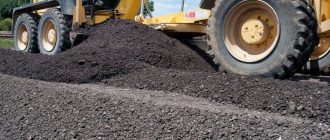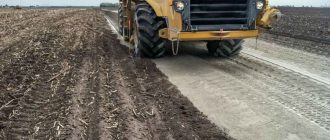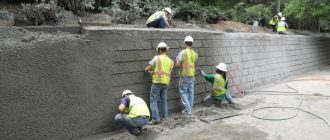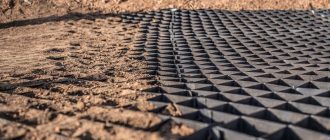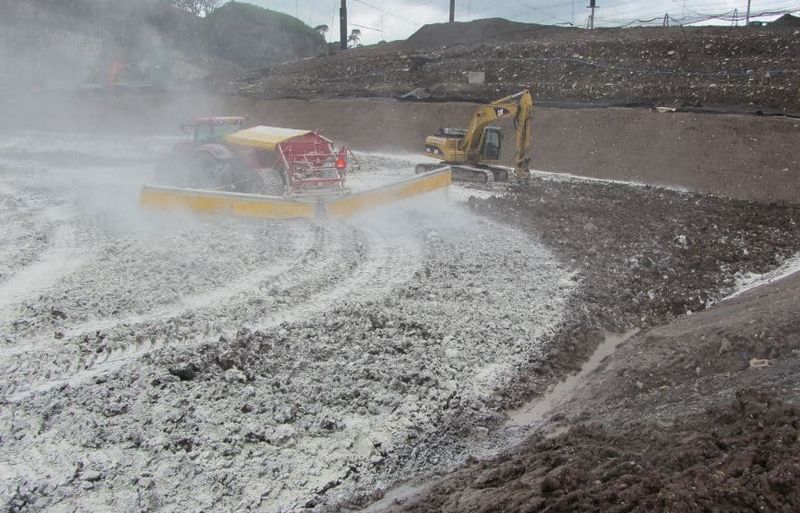
Enhancing Soil Stability with the Use of Chemical Additives
Soil stabilization is a critical process in construction and civil engineering projects. It involves improving the physical and mechanical properties of soil to enhance its load-bearing capacity and reduce the risk of settlement or erosion. One effective method of soil stabilization is through the use of chemical additives.
Chemical additives are substances that are added to soil to alter its properties and improve its stability. These additives can be inorganic compounds, such as lime or cement, or organic compounds, such as polymers or enzymes. They work by interacting with the soil particles and forming chemical bonds that increase cohesion, reduce water absorption, and enhance compaction.
One common chemical additive used for soil stabilization is lime. Lime is a versatile compound that can be used in various soil types and conditions. When added to soil, lime reacts with clay minerals and forms calcium silicate hydrate, which strengthens the soil structure and reduces its plasticity. Lime can also help in reducing the swell potential of expansive soils, making them more stable and less prone to volume changes.
In addition to lime, cement is another widely used chemical additive for soil stabilization. Cement is a fine powder that, when mixed with soil, forms a hardened mass. This process, known as cement stabilization, increases the soil’s strength and durability. Cement can be used for stabilizing a wide range of soils, including clay, silt, and sand. It is particularly effective in creating a solid base for roads, highways, and other heavy infrastructure projects.
Overall, chemical additives play a crucial role in soil stabilization. They offer a cost-effective and efficient solution for improving soil properties and ensuring the long-term stability of construction projects. By choosing the appropriate chemical additive based on soil conditions and project requirements, engineers and contractors can achieve stronger and more durable foundations, reducing maintenance costs and increasing the lifespan of structures.
Types of Chemical Additives
In the field of soil stabilization, there are several types of chemical additives that are commonly used. These additives are designed to improve the engineering properties of soil, making it more stable, durable, and suitable for construction purposes. Some of the most commonly used types of chemical additives for soil stabilization include:
Lime: Lime is a commonly used chemical additive for soil stabilization. It is typically used to increase the pH of the soil and improve its overall stability. Lime can be applied to both clayey and sandy soils, and it helps to reduce plasticity, increase strength, and enhance the load-bearing capacity of the soil.
Cement: Cement is another widely used chemical additive for soil stabilization. It is typically used to increase the strength and stability of the soil. Cement is most effective when used with clayey soils, as it helps to reduce plasticity and increase the soil’s compressive strength. It is commonly used in road construction and other infrastructure projects.
Bitumen: Bitumen is a type of petroleum-based chemical additive that is commonly used for soil stabilization. It is typically used with sandy and gravelly soils, as it helps to increase cohesion and reduce permeability. Bitumen is commonly used in road construction, especially in areas with high traffic loads.
Polymer-based additives: Polymer-based additives are synthetic chemicals that are commonly used for soil stabilization. These additives are designed to improve the stability and durability of the soil by increasing its strength, reducing plasticity, and enhancing its resistance to erosion and weathering. Polymer-based additives are commonly used in a wide range of construction projects, including road construction, building foundations, and slope stabilization.
Chemical stabilizers: Chemical stabilizers are a type of chemical additive that is specifically designed to improve the stability of the soil. These stabilizers work by chemically reacting with the soil particles, forming stable bonds and increasing the soil’s strength and load-bearing capacity. Chemical stabilizers are commonly used in areas with poor soil conditions, such as soft clay or loose sand.
Overall, the use of chemical additives for soil stabilization can greatly improve the engineering properties of soil, making it more suitable for construction purposes. The choice of additive depends on the specific soil conditions and the desired engineering properties.
Common Chemical Stabilizers
Chemical stabilizers are commonly used in soil stabilization projects to improve the engineering properties of the soil. These additives are typically mixed with the soil to enhance its strength, durability, and resistance to erosion.
There are several common chemical stabilizers that are frequently used in soil stabilization applications:
| Name | Description |
|---|---|
| Lime | Lime is a widely used chemical stabilizer that reacts with the soil to increase its strength and reduce its plasticity. It helps to stabilize clay soils and improve their load-bearing capacity. |
| Cement | Cement is another common chemical stabilizer that is used to improve the strength and durability of the soil. It reacts with the soil particles to form a cementitious matrix, providing increased stability. |
| Fly Ash | Fly ash is a byproduct of coal combustion and is often used as a chemical stabilizer in soil stabilization projects. It reacts with the soil to produce cementitious properties, enhancing the soil’s strength and reducing its plasticity. |
| Bitumen | Bitumen, also known as asphalt, is commonly used as a chemical stabilizer in road construction projects. It improves the strength and durability of the soil, providing resistance to moisture and traffic loads. |
| Polymer Emulsion | Polymer emulsion is a synthetic chemical stabilizer that is often used to improve the engineering properties of the soil. It enhances the soil’s strength, stability, and resistance to erosion, making it suitable for a wide range of applications. |
These common chemical stabilizers offer different benefits and are chosen based on the specific requirements of the soil stabilization project. They play a crucial role in enhancing the performance of the soil and ensuring the long-term stability of the constructed infrastructure.
Polymer Additives
Polymer additives are chemical compounds that are added to soil to improve its stability and strength. These additives are typically polymers, which are large molecules made up of repeating subunits. Polymer additives are commonly used in soil stabilization projects to enhance the performance and durability of the soil.
One of the main benefits of using polymer additives is their ability to increase the cohesion and viscosity of the soil. This helps to bind the soil particles together, resulting in improved stability and reduced erosion. Polymer additives can also improve the soil’s resistance to water infiltration, reducing the risk of soil erosion and subsidence.
In addition to improving the physical properties of the soil, polymer additives can also enhance its chemical properties. They can increase the soil’s pH level, making it more alkaline, which can be beneficial for certain types of plants. Polymer additives can also help to retain moisture in the soil, reducing the need for frequent watering.
There are various types of polymer additives that can be used for soil stabilization, including polyacrylamide, polyvinyl alcohol, and polyethylene glycol. The choice of polymer additive depends on the specific requirements of the project and the type of soil being treated.
Overall, polymer additives are an effective and versatile solution for soil stabilization. They can significantly improve the stability and strength of the soil, making it suitable for a wide range of applications, including road construction, building foundations, and landscaping projects.
Fly Ash as an Additive
Fly ash is a byproduct of coal combustion in power plants. It is a fine powder that is collected from the flue gas of a coal-fired boiler. Fly ash is widely used as an additive in soil stabilization due to its cementitious properties.
When used in soil stabilization, fly ash can improve the engineering properties of the soil, such as its strength and durability. The cementitious properties of fly ash allow it to react with water and form additional cementitious compounds, which can help bind the soil particles together.
In addition to its cementitious properties, fly ash also has pozzolanic properties. This means that it can react with the calcium hydroxide present in the soil to form additional cementitious compounds. This reaction helps to fill the voids in the soil and improve its overall stability.
Fly ash is typically used in soil stabilization projects where the soil has poor engineering properties, such as low strength or high plasticity. It can be used with a variety of soil types, including clay, silt, and sand.
One of the advantages of using fly ash as an additive is its availability. As a byproduct of coal combustion, fly ash is readily available in large quantities. This makes it a cost-effective option for soil stabilization projects.
Overall, fly ash is a valuable additive for soil stabilization due to its cementitious and pozzolanic properties. It can improve the engineering properties of the soil and enhance its stability. Additionally, its availability and cost-effectiveness make it a popular choice for soil stabilization projects.
Plastic Waste as an Additive
Plastic waste, such as discarded bottles, bags, and packaging materials, can be used as an additive in soil stabilization. This is a sustainable solution that helps to reduce plastic waste and improve the quality of soil for construction purposes.
Plastic waste is typically shredded into small pieces and mixed with soil to enhance its properties. The plastic particles act as reinforcement, increasing the soil’s tensile strength and reducing its compressibility. This results in improved stability and load-bearing capacity, making it suitable for construction projects.
In addition to enhancing soil properties, the use of plastic waste as an additive also has environmental benefits. By repurposing plastic waste, it helps to reduce the amount of plastic ending up in landfills or polluting the environment. It also reduces the need for virgin materials, such as gravel or sand, which can have negative environmental impacts due to extraction and transportation processes.
Furthermore, the use of plastic waste as an additive can help to reduce construction costs. By utilizing a readily available and low-cost material, it can provide a cost-effective solution for soil stabilization. This can be particularly beneficial in areas with limited resources or where traditional stabilizers are costly or not easily accessible.
However, it is important to consider the long-term durability and potential environmental impacts of using plastic waste as an additive. Research is ongoing to assess the performance and longevity of soil stabilized with plastic waste. Additionally, proper waste management and recycling practices should be implemented to ensure that the plastic waste used as an additive does not end up causing further pollution or harm to the environment.
In conclusion, plastic waste can be effectively utilized as an additive for soil stabilization. It offers a sustainable solution that helps to reduce plastic waste, improve soil properties, and reduce construction costs. However, further research and responsible waste management practices are necessary to fully assess its long-term performance and environmental impacts.
Application of Chemical Additives
Chemical additives are commonly used in soil stabilization projects to improve the engineering properties of soils. These additives can be applied in various ways depending on the specific requirements of the project.
One common method of applying chemical additives is through mixing. The additives can be mixed with the soil either in-situ or in a laboratory setting. In-situ mixing involves adding the additive directly to the soil at the project site. This method is often used for large-scale soil stabilization projects. In a laboratory setting, the soil and additive are mixed together in controlled conditions to determine the optimal dosage and effectiveness of the additive.
Another method of applying chemical additives is through injection. This method involves injecting the additive directly into the soil using specialized equipment. Injection is often used for deep soil stabilization projects where the additives need to penetrate the soil to improve its properties. This method allows for precise control over the distribution and dosage of the additive.
Chemical additives can also be applied by spraying or dusting. Spraying involves applying the additive in liquid form onto the soil surface using spray equipment. This method is commonly used for surface stabilization projects where the additive needs to be distributed evenly over a large area. Dusting, on the other hand, involves applying the additive in powdered form onto the soil surface. This method is often used for smaller-scale projects or when the additive needs to be applied to a specific area of the soil.
Regardless of the application method, it is important to follow the manufacturer’s instructions and guidelines when using chemical additives. Proper application techniques and dosage are crucial for achieving the desired results and ensuring the long-term stability of the soil.
How Chemical Stabilizers Are Added to Soil
Chemical stabilizers are added to soil in order to improve its engineering properties and enhance its stability. There are several methods for incorporating chemical stabilizers into soil, depending on the specific additive and the desired results.
One common method is to mix the chemical stabilizer with the soil during the construction or excavation process. This can be done using specialized equipment such as a soil stabilizer or a cement mixer. The stabilizer is typically added in a predetermined ratio based on the characteristics of the soil and the desired outcome.
Another method is to apply the chemical stabilizer to the surface of the soil after it has been placed. This can be done by spreading the stabilizer evenly over the soil and then using a mechanical device, such as a tractor or a roller, to mix it into the top layer. This method is often used for surface stabilization or dust control.
In some cases, the chemical stabilizer may be injected directly into the soil using specialized equipment. This method is typically used for deep soil stabilization or for treating specific areas of the soil where strength or stability is a concern.
Regardless of the method used, it is important to ensure proper mixing and distribution of the chemical stabilizer throughout the soil. This can be achieved through thorough testing and analysis of the soil properties, as well as careful monitoring during the application process.
Overall, the addition of chemical stabilizers to soil can significantly improve its strength, durability, and resistance to erosion. By choosing the appropriate stabilizer and applying it correctly, engineers and construction professionals can enhance the performance of soil in a wide range of applications.
Factors Determining Additive Quantity
The quantity of chemical additives required for soil stabilization depends on several factors. These factors include:
1. Soil Type: Different soil types have varying levels of stability and require different amounts of additives to achieve the desired stabilization. For example, sandy soils may require more additives compared to clayey soils.
2. Soil Moisture Content: The moisture content of the soil plays a crucial role in determining the quantity of additives needed. Dry soils may require more additives to achieve the desired stabilization, while wet soils may require less.
3. Soil pH: The pH level of the soil can affect the effectiveness of chemical additives. Soils with high pH levels may require higher quantities of additives to achieve the desired results.
4. Project Requirements: The specific requirements of the stabilization project also influence the quantity of additives needed. Factors such as the desired level of stability, load-bearing capacity, and environmental considerations can all impact the additive quantity.
5. Additive Properties: The properties of the chemical additive itself can also determine the quantity needed. Some additives may have higher concentrations or effectiveness, requiring less quantity compared to others.
It is important to carefully analyze these factors and consult with soil stabilization experts to determine the appropriate quantity of additives for a successful stabilization project.
Benefits and Modifications
The use of chemical additives for soil stabilization offers several benefits and modifications to improve soil quality and enhance construction projects. These additives are designed to modify the physical and chemical properties of soil, making it more stable and suitable for construction purposes.
Some of the key benefits and modifications provided by chemical additives include:
- Increased strength and stability: Chemical additives can significantly improve the strength and stability of the soil, making it capable of supporting heavy loads and resisting deformation. This is particularly important for construction projects that require a solid and stable foundation.
- Reduced soil erosion: Soil erosion can be a major issue in construction sites, leading to the loss of fertile topsoil and damage to the environment. Chemical additives can help reduce soil erosion by binding the soil particles together, preventing them from being washed away by rainwater or wind.
- Improved workability: Chemical additives can enhance the workability of soil, making it easier to handle and manipulate during construction. They can reduce the plasticity and improve the compaction characteristics of soil, allowing for easier excavation, grading, and compaction.
- Increased water resistance: Chemical additives can enhance the water resistance of soil by reducing its permeability. This can be particularly useful in areas with high groundwater levels or in projects where water infiltration needs to be minimized, such as the construction of tunnels or underground structures.
- Enhanced durability: Chemical additives can improve the durability of soil, making it more resistant to wear and tear, weathering, and degradation over time. This can extend the lifespan of construction projects and reduce the need for maintenance and repairs.
Overall, the use of chemical additives for soil stabilization can bring numerous benefits and modifications that contribute to the success of construction projects. By improving soil quality, these additives can enhance the performance, longevity, and sustainability of structures, while also minimizing environmental impacts.
Advantages of Different Chemical Stabilizers
Chemical stabilizers are commonly used in soil stabilization projects due to their numerous advantages. These additives help improve the engineering properties of soil, making it more suitable for construction purposes. Here are some of the advantages of different chemical stabilizers:
- Lime: Lime is a commonly used chemical stabilizer that offers several advantages. It increases the soil’s pH level, reducing its plasticity and improving its workability. Lime also enhances the soil’s load-bearing capacity and reduces its shrink-swell potential. Additionally, lime stabilizes clay soils, reducing their swell potential.
- Cement: Cement is another widely used chemical stabilizer that provides several benefits. It reacts with water to form cementitious compounds, creating a strong and durable soil-cement matrix. Cement stabilization increases the soil’s strength, stiffness, and resistance to erosion. It also reduces the soil’s permeability, making it less susceptible to water infiltration.
- Fly Ash: Fly ash is a byproduct of coal combustion and is often used as a chemical stabilizer. It improves the workability and plasticity of soil, making it easier to compact. Fly ash stabilization also enhances the soil’s strength and reduces its susceptibility to frost damage. Additionally, fly ash can help mitigate the environmental impact of coal combustion by recycling the waste material.
- Bitumen: Bitumen is commonly used as a chemical stabilizer for road construction projects. It improves the soil’s strength, stability, and resistance to water damage. Bitumen stabilization also helps reduce the soil’s susceptibility to temperature variations, preventing deformation and rutting. Moreover, bitumen-treated soils have better resistance to traffic loads and increased durability.
- Polymer: Polymer stabilizers offer several advantages for soil stabilization. They improve the soil’s workability and reduce its plasticity. Polymer stabilization also enhances the soil’s strength, stiffness, and resistance to erosion. Moreover, polymer additives can help reduce the environmental impact of stabilization projects by using recyclable materials.
Chemical stabilizers provide numerous advantages for soil stabilization projects. Lime, cement, fly ash, bitumen, and polymer stabilizers all offer unique benefits that improve the engineering properties of soil, making it more suitable for construction purposes.
Altering Soil Properties with Chemical Additives
Chemical additives are commonly used to alter soil properties for various purposes, including soil stabilization. These additives can improve the strength, durability, and load-bearing capacity of soils, making them suitable for construction projects.
One commonly used chemical additive is cement, which is mixed with soil to create a stable and strong material known as soil-cement. This mixture is often used for road and pavement construction, as it provides excellent strength and resistance to water and erosion.
Lime is another chemical additive that is often used for soil stabilization. When mixed with clay soils, lime can improve their plasticity and reduce their swelling and shrinkage properties. Lime can also improve the stability and load-bearing capacity of sandy soils.
Other chemical additives, such as fly ash and slag, can be used to improve the properties of soils. These additives are by-products of industrial processes and can provide benefits such as increased strength, reduced permeability, and improved resistance to chemicals and environmental factors.
Chemical additives can also be used to improve the fertility of soils. For example, fertilizers can be added to soil to provide essential nutrients for plant growth. These additives can enhance soil productivity and support healthy plant growth.
Overall, chemical additives play a crucial role in altering soil properties to meet specific requirements. Whether it’s for soil stabilization or improving soil fertility, these additives offer a cost-effective and efficient solution for various construction and agricultural projects.
Q&A:
What are chemical additives for soil stabilization?
Chemical additives for soil stabilization are substances that are added to soil to improve its engineering properties and make it more suitable for construction purposes.
What are the benefits of using chemical additives for soil stabilization?
There are several benefits of using chemical additives for soil stabilization. They can improve the strength and load-bearing capacity of soil, reduce its compressibility and settlement, enhance its resistance to erosion and water penetration, and improve its workability and compaction characteristics.
What are some commonly used chemical additives for soil stabilization?
Some commonly used chemical additives for soil stabilization include lime, cement, fly ash, bitumen, and polymers. These additives can be used alone or in combination to achieve the desired soil properties.
How are chemical additives for soil stabilization applied?
Chemical additives for soil stabilization can be applied by mixing them with the soil in its natural state or by injecting them into the soil after excavation. The additives are usually mixed with water or a carrier fluid to form a slurry, which is then blended with the soil to achieve the desired properties.
Are there any environmental concerns associated with the use of chemical additives for soil stabilization?
Yes, there can be environmental concerns associated with the use of chemical additives for soil stabilization. Some additives, such as cement and lime, can release harmful substances into the environment if not properly handled and disposed of. It is important to follow proper guidelines and regulations to minimize the environmental impact of soil stabilization projects.
What are chemical additives for soil stabilization?
Chemical additives for soil stabilization are substances that are added to soil to improve its strength, stability, and durability. These additives can be in the form of powders, liquids, or granules, and they work by altering the physical and chemical properties of the soil.


